#acfkimono
Link

APRIL 2023
5 notes
·
View notes
Link

Asian Clothing Figurines Review
Asian Clothing: Japanese Kimono
Kimono Type: Kabuki Kimono: Tachiyaku
Accuracy Rating: 5/5
Explanation: Kabuki lovers, pay attention! This is the most one-to-one representation of a traditional kabuki character I've ever seen! Luffy is meant to be the character Tadanobu Sato from the kabuki play, Yoshitsune Senbon Zakura. This character is actually a disguise worn by a kitsune (played by the same actor in a different costume) that uses it to get close to the mistress of Minamoto Yoshitune, who has a hand drum made from the skin of its kitsune parents. You can compare the figurine's costume to the kabuki character's original appearance below.

(Source: https://hobby.dengeki.com/news/973412/)
The details are striking! Firstly, he's hitting the mie (or pose) very similar to the signature mie for the character. They also simulated the ipponguma-style kumadori makeup, which is often used for roles that are seen as strong and reliable, but also rough and rascally. Sounds like Luffy, doesn't it? Secondly, his kimono is tit-for-tat with the traditional costume! He wears a fringed men's kimono with the sleeves bound up using a nio-dasuki as a tasuki. The nio-dasuki (仁王襷) is the thick, purple-and-white braided cord that's often seen worn by guardian kings surrounding Buddhist dieties and sumo wrestlers; anyone wearing nio-dasuki is trying to evoke the power and majesty of those fierce Buddhist guardians. Lastly, he has the signature twin swords of a samurai with a maroon-colored sheath and bright green sageo (i.e. hanging cord) as well as the big sloppy bow for his obi musubi! The only real difference is that Luffy's kimono has a black background, while the original costume's is bright red. I find the difference negligible, however, since it still features the golden fringe design on the hem and the genji-guruma (源氏車, imperial cartwheels) motif throughout. Excellent figure for both fans of One Piece and kabuki!
6 notes
·
View notes
Link

APRIL 2023
2 notes
·
View notes
Link

APRIL 2023
2 notes
·
View notes
Link
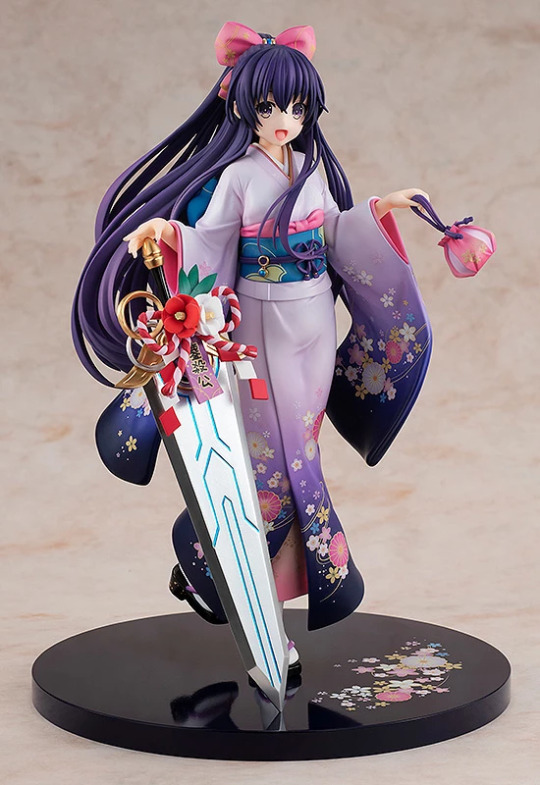
APRIL 2023
3 notes
·
View notes
Link

Asian Clothing Figurines Review
Asian Clothing: Japanese Kimono
Kimono Type: Heian Kimono: Kariginu-sugata
Accuracy Rating: 5/5
Explanation: Perfection! For a heian-period men’s kariginu-sugata, it’s perfect! This outfit consists of, put simply, white kosode & shitabakama (which serve as underwear), wine-colored akome, robin's-egg-blue-colored sashinuki (i.e. "puffy" hakama), and the white kariginu (big floppy kimono-like overrobe). He's also wearing a tate-eboshi (the tall black hat on his head) and appears to be dancing with a sensu-ogi (i.e. paper folding fan).
The underwear layer is only visible at his neck (as it should be), while the remaining layers are easily distinguished by color. The red akome and white kariginu are both osode style, meaning that the opening where the hand exits the sleeve is completely open. Even the strings on the edges of the kariginu sleeves are accurate to historical garments! He's also styled the kariginu correctly where the front is bloused over a belt and the back is worn long. Tate-eboshi are usually worn over a hairstyle called motodori, which is essentially a tall thin man-bun, but wearing it over long loose hair was possible with the attachment of strings to tie it under the chin. High marks all around!
#kimono#heian#heiankimono#kariginusugata#kariginu#asianclothingfigurines#acfkimono#acfheiankimono#acfkariginusugata#5outof5
8 notes
·
View notes
Link

Asian Clothing Figurines Review
Asian Clothing: Japanese Kimono
Kimono Type: Hanayomeishou Kimono: Shirouchikake & Irokakeshita
Accuracy Rating: 4/5
Explanation: Very nice! The pink and white color scheme gives the impression of sweetness and femininity. The kimono has an accurate number of layers; the white nagajuban, the pink kakeshita (i.e. hanayome furisode), and white furisode uchikake are all visible. The base woven patterns on the pink kakeshita and uchikake are excellent, which convey a sense of high quality and richness. The deep pink futokorogatana (i.e. katana pouch) & hakoseko (i.e. wedding purse) tucked into her obi & collars are necessary wedding accessories and the pink obiage tied in a good luck knot is great attention to detail. The pink platform heeled zori are a lovely modern touch as well as the giant hanakanzashi and her modern floral bouquet. The only real negatives are that neither the uchikake nor the kakeshita have the thickly padded hems that are essential to both those garments. Otherwise, a stunning outfit!
#kimono#hanayomeishou#uchikake#shirouchikake#irokakeshita#kakeshita#asianclothingfigurines#acfkimono#acfhanayomeishou#4outof5#acfshirouchikake
6 notes
·
View notes
Link

Asian Clothing Figurines Review
Asian Clothing: Japanese Kimono
Kimono Type: Yuukaku Kimono: Furisode-Shinzo
Accuracy Rating: 3.5/5
Explanation: On first glance, this figurine looks quite good for a furisode-shinzo, but I’m afraid the devil is in the details. Her kimono has a gorgeous pattern and a striking sakura pink padded trailing hem. The same pink nagajuban shows at the collar and sleeve openings. However, that nagajuban seems to disappear below the waist; there should be another layer opening around her legs. The collar is on her shoulders (as it should be), but should be placed farther away from her neck. Her sheer overkimono is a lovely touch!
The obi musubi is correct for her rank and has a pretty, contrasting geometric pattern to visually balance the soft stripes & roses from her kimono. For a shinzo, her wearing of tabi and raised geta is questionable. In the Yoshiwara, shinzo before 1760 weren’t sexually available to clients, but they were afterwards. I would find it strange for her to be wearing tabi (which imply she’s unavailable) with raised koma geta (which seems to display her unavailability). Not to mention, she’s clearly a grown woman, which makes it weird to think she hasn’t already taken on clients or, at the very least, already lost her virginity i.e. respectability.
Lastly, her hair is obviously not accurate for a furisode-shinzo, even if she were off duty. Her weird pink shidare strands on either side of her head also look strange.
#kimono#asianclothingfigurines#acfkimono#yuukaku#furisodeshinzo#acffurisodeshinzo#acfyuukaku#3.5outof5
10 notes
·
View notes
Link

Asian Clothing Figurines Review
Asian Clothing: Japanese Kimono
Kimono Type: Kabuki Kimono: Nihonbuyo - Onnagata
Accuracy Rating: 5/5
Explanation: Nihon-buyo, also known as Japanese traditional dance, is derived from kabuki and features elements from Noh drama, bunraku, Western dance styles, and other modern styles. In fact, the types of dances performed in the nihon-buyo repertoire are classified into "male" and "female" using the same names as kabuki does, "tachiyaku" and "onnagata" respectively. Thankfully, both sets of roles can be played by either gender! While some nihon-buyo performances were direct translations of existing Noh, kabuki, or bunraku dramas into pure choreography, others weren't meant to portray specific characters. This allowed performers to put together costumes and choreograph the dances more freely.
This doll is a collaboration with Yoshitoku Dolls, a 300-year-old traditional Japanese doll company based in Tokyo, to create an anime figurine that embodies the elegance and style of traditional Japanese dancing dolls. Key to that traditional look is the practice of katahada (片肌脱) when a performer has one shoulder of their uppermost kimono undone. The reasons for this undoing are many. When kimono were everyday clothing, katahada and morohada (諸肌脱ぎ, the practice of undoing the top half of your kimono) were done by people of all classes to allow for greater comfort and mobility while they worked (Source 2). However, it didn't take long for nihon-buyo performers to use katahada/ morohada as a way to emphasize the splendor of their costumes (Source 3) and reinforce visual elements of storytelling (Source 4 & 5).
Source 1: https://www.yoshitoku.co.jp/
Source 2: https://www.timeout.com/tokyo/things-to-do/the-mysteries-of-the-kimono-part-2
Source 3: http://blog.kanhosen.net/?eid=965892
Source 4: http://kimiryu.jugem.jp/?eid=12
Source 5: http://blog.livedoor.jp/masahime1112/archives/52832320.html
#kimono#kabuki#nihonbuyo#onnagata#asianclothingfigurines#acfkimono#acfkabuki#acfnihonbuyo#acfonnagata#5outof5
3 notes
·
View notes
Link

Asian Clothing Figurines Review
Asian Clothing: Japanese Kimono
Kimono Type: Kabuki Kimono: Nihon-buyo - Onnagata
Accuracy Rating: 5/5
Explanation: Nihon-buyo, also known as Japanese traditional dance, is derived from kabuki and features elements from Noh drama, bunraku, Western dance styles, and other modern styles. In fact, the types of dances performed in the nihon-buyo repertoire are classified into "male" and "female" using the same names as kabuki does, "tachiyaku" and "onnagata" respectively. Thankfully, both sets of roles can be played by either gender! While some nihon-buyo performances were direct translations of existing Noh, kabuki, or bunraku dramas into pure choreography, others weren't meant to portray specific characters. This allowed performers to put together costumes and choreograph the dances more freely.
This doll is a collaboration with Yoshitoku Dolls, a 300-year-old traditional Japanese doll company based in Tokyo, to create an anime figurine that embodies the elegance and style of traditional Japanese dancing dolls. Key to that traditional look is the practice of katahada (片肌脱) when a performer has one shoulder of their uppermost kimono undone. The reasons for this undoing are many. When kimono were everyday clothing, katahada and morohada (諸肌脱ぎ, the practice of undoing the top half of your kimono) were done by people of all classes to allow for greater comfort and mobility while they worked (Source 2). However, it didn't take long for nihon-buyo performers to use katahada/ morohada as a way to emphasize the splendor of their costumes (Source 3) and reinforce visual elements of storytelling (Source 4 & 5).
Source 1: https://www.yoshitoku.co.jp/
Source 2: https://www.timeout.com/tokyo/things-to-do/the-mysteries-of-the-kimono-part-2
Source 3: http://blog.kanhosen.net/?eid=965892
Source 4: http://kimiryu.jugem.jp/?eid=12
Source 5: http://blog.livedoor.jp/masahime1112/archives/52832320.html
#kimono#kabuki#nihonbuyo#onnagata#asianclothingfigurines#acfkimono#acfkabuki#acfnihonbuyo#acfonnagata#5outof5
3 notes
·
View notes
Link
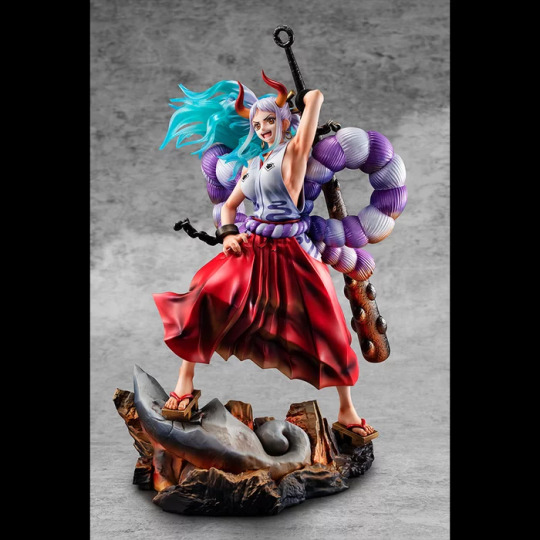
Asian Clothing Figurines Review
Asian Clothing: Japanese Kimono
Kimono Type: Kabuki Kimono: Tachiyaku
Accuracy Rating: 5/5
Explanation: Much like her hero Kozuki Oden, Yamato's design doesn't copy an existing character but is an amalgamation of various elements of kabuki and Noh theatre. Beginning with the most obvious, Yamato is clearly meant to represent a traditional Japanese oni (鬼, ogre, or demon). His horns, kanabo, and home island of Onigashima (lit. demon island) are evidence enough of that. Visually, the giant kanabo, wild curly blue-ombre hair, and bright red hannya-style horns reinforce that connection on the figurine. His core outfit is a white tomesode with a wavy wisp print and red nagajuban with the sleeves cut off, accompanied by a pair of bright red hakama. He also wears nio-dasuki (仁王襷) around his waist. The nio-dasuki is the thick, purple-and-white braided cord that's often seen worn by guardian kings surrounding Buddhist deities and sumo wrestlers; anyone wearing nio-dasuki is trying to evoke the power and majesty of those fierce Buddhist guardians.
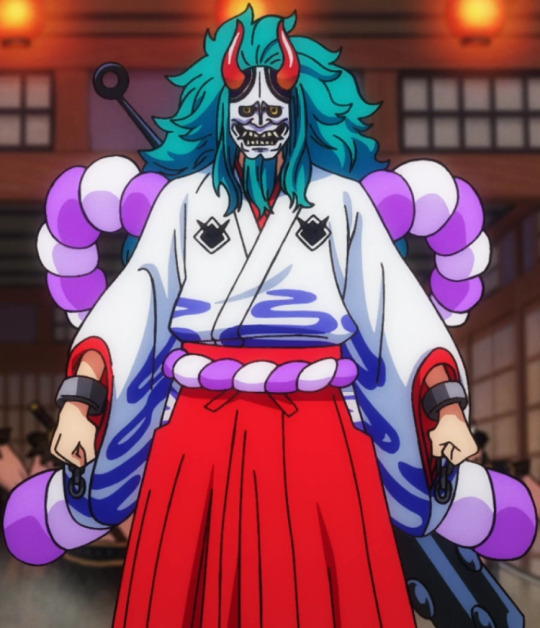
His original disguise outfit has mild crossdressing vibes for me because, while the hakama and nagajuban are essentially gender-neutral garments, it would be highly unlikely for the white kimono to be a men's kimono due to how high the purple wisp print rises on the body. The print rises way up over the waistline and even features designs on the sleeves, which is much more standard of how patterns are placed on women's kimono than on men's. In fact, the overall image of white short-sleeved kimono on top with red hakama on the bottom is very reminiscent of very traditionally feminine looks worn by miko priestesses as uniforms and noblewomen of the Heian period as undergarments. This interplay between male and female garments in the same outfit may play into the symbolic association of hannya as representing women who become twisted due to pain, rage, and sadness. This plays right into Yamato as a One Piece character since his backstory features a lot of cruelty from his father's constant abuse as well as his own understandable frustration of understanding himself to be a man in a particularly feminine body. Overall, nicely done!
3 notes
·
View notes
Link

Asian Clothing Figurines Review
Asian Clothing: Japanese Kimono
Kimono Type: Kabuki Kimono: Tachiyaku
Accuracy Rating: 5/5
Explanation: Kabuki lovers, heads up! Here's an excellent reimagining of two anime characters as kabuki protagonists! It appears that they’re both characters from the play "Ukiyozuka Hiyoku no Inazuma.” Naruto appears to be Fuwa Banzaemon Shigekatsu, while Sasuke appears to be the character Nagoya Sanza. The Naruto/ Banzaemon character famously wears a flashy kimono with a clouds-and-lightning print, while the Sasuke/ Sanza character wears a signature swallows-in-the-rain printed kimono. The climax of the play is when both samurai encounter each other in the Yoshiwara and fight over the affections of the same oiran (i.e. high ranking courtesan). Check how the figurines' costumes compare to the original kabuki kimono below.
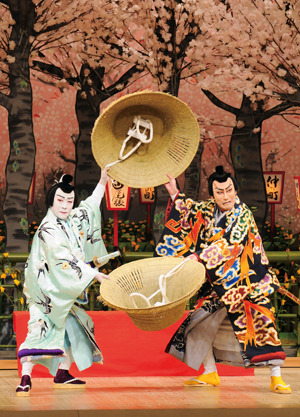
(Source: https://enmokudb.kabuki.ne.jp/phraseology/3633/)
I think these kabuki protagonists map well onto Naruto and Sasuke respectively. Naruto's character, Banzaemon, is considered a dandy, who dresses in flashy & eccentric styles; not unlike Naruto's signature neon orange outfit. The lightning motif connects back to Naruto via his father (Minato Namikaze) who perfected a lightning-based technique! Banzaemon's backstory features a lot of nefarious schemes, betrayals, and death; similar to Naruto's origin story. Sasuke's character, Sanza, is a character who has lost his home and family, much like Sasuke did. The swallows on his kimono connect back to Sasuke via his signature "chidori" technique, which translates to either "1,000 birds" or "plovers," a type of bird, as well as his Cursed Seal form, which gave him the ability to fly. Interestingly, Sanza is also infamous for having lots of women fawning over him and being considered quite handsome, which is also very true of Sasuke! Together, these characters also fit the overall themes of their stories because they're meant to be rivals! In the kabuki play, it's over a woman, which is one of the many rivalries Naruto & Sasuke shared in the anime. Overall, an amazing pair of figures for fans of both kabuki and Naruto!
4 notes
·
View notes
Link

Asian Clothing Figurines Review
Asian Clothing: Japanese Kimono
Kimono Type: Tera Kimono: Biku
Accuracy Rating: 5/5
2 notes
·
View notes
Link
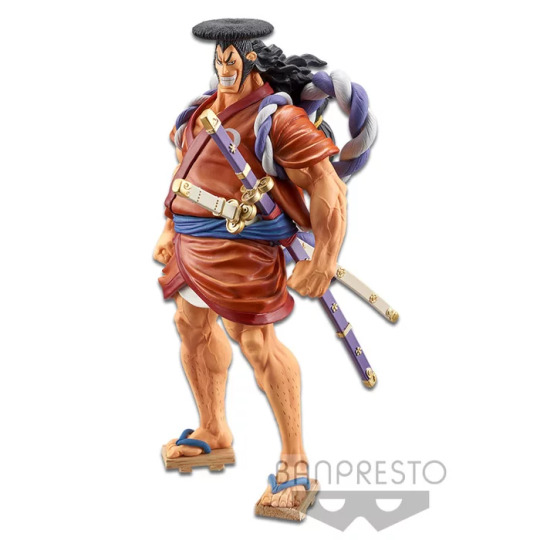
Asian Clothing Figurines Review
Asian Clothing: Japanese Kimono
Kimono Type: Kabuki Kimono: Tachiyaku
Accuracy Rating: 5/5
Explanation: So, Oden isn't portraying an existing character, but he is definitely inspired by various aspects of kabuki characters. Starting from the tippy top, his hair seems reminiscent of two wigs prominent in kabuki: the "50-Day Chasen" (五十日) and the "Evil Prince" (王子). The 50-day Chasen is meant to represent a male character, usually a villain, who's been unable to shave the crown of his head daily to maintain the standard version of the chasen hairstyle. This inability is due to the character either hiding from enemies, having fallen ill, being incarcerated or some other form of neglect. The Evil Prince wig is used for male characters of the nobility who have violent tendencies. According to Oden's backstory, the combination of these two villainous wigs is quite accurate since he's the son of a nobleman who spent his formative years causing constant havoc and doing things most people would consider evil.
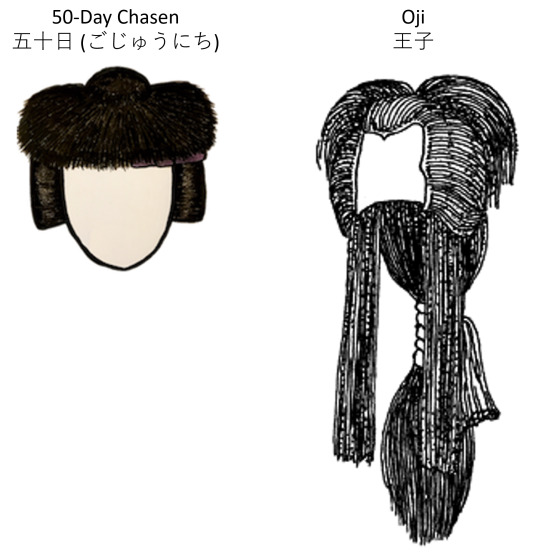
(Source 50-day Chasen: https://www.kabukijitenp.com/blank-22) (Source: Oji Wig: https://kotobank.jp/word/%E6%82%AA%E7%8E%8B%E5%AD%90-2001136)
Moving onto the rest of his outfit, we have a lot going on! Firstly, his orange kimono is worn in the shirippashori-style (尻っ端折り, "backside hem folding"), where the back hem of his kimono is tucked into his obi in order to provide greater leg mobility. This style is commonly seen on thieves or outlaw characters in kabuki to indicate low social status and possible criminality. Ironically, his double swords clearly mark him as a member of the relatively high-ranking samurai class! Then, we see he uses a nio-dasuki as a tasuki to hold back his kimono sleeves for greater arm mobility. The nio-dasuki (仁王襷) is the thick, purple-and-white braided cord that's often seen worn by guardian kings surrounding Buddhist dieties and sumo wrestlers; anyone wearing nio-dasuki is trying to evoke the power and majesty of those fierce Buddhist guardians. Taken altogether, Oden's combination of traits from villains, outlaws, samurai, and even deities serves to tell the audience that he's a clever, unconventional, well-trained, and powerful man. As far as my novice eyes can tell, he's an excellent amalgamation of kabuki conventions to create not only striking visuals but also hint at his complex backstory.
2 notes
·
View notes
Link

Asian Clothing Figurines Review
Asian Clothing: Japanese Kimono
Kimono Type: Hanayomeishou Kimono: Shirouchikake
Accuracy Rating: 3.5/5
Explanation: Our bride is wearing a modern twist on a very classic version of Japanese bridal wear, known as “shiromuku,” which I’m calling “shirouchikake.” Shiromuku consists of an all-white kimono and accessories, while shirouchikake only requires having a white furisode uchikake. The remaining layers and accessories can be any color of the rainbow in combination with white. These colorful accents are often featured on the uchikake, in places like the padded hem or the inner lining. Her uchikake has a violet interior lining. Her accessories reinforce this with the same violet on the hanao on her sandals, obiage, obi, hiyoku (i.e. false collar), futokorogatana (i.e. katana pouch), hakoseko (i.e. wedding purse), and inner lining of her wataboshi (i.e. cotton hood). Her red and violet flowerball bouquet complements her very modern color scheme. The only negatives are that her uchikake and kakeshita are both missing their characteristic padded hems and that she’s wearing her kakeshita up with her uchikake down—otherwise, an excellent example of a modern bride.
#kimono#hanayomeishou#shirouchikake#asianclothingfigurines#acfkimono#acfhanayomeishou#acfshirouchikake#3.5outof5
2 notes
·
View notes
Link

Asian Clothing Figurines Review
Asian Clothing: Japanese Kimono
Kimono Type: Hanayomeishou Kimono: Shirouchikake
Accuracy Rating: 3.5/5
Explanation: Our bride is wearing a modern twist on a very classic version of Japanese bridal wear, known as “shiromuku,” which I’m calling “shirouchikake.” Shiromuku consists of an all-white kimono and accessories, while shirouchikake only requires having a white furisode uchikake. The remaining layers and accessories can be any color of the rainbow in combination with white. These colorful accents are often featured on the uchikake, in places like the padded hem or the inner lining. Her uchikake has a neon green interior lining. Her accessories reinforce this with the same neon green on the hanao on her sandals, obiage, obi, futokorogatana (i.e. katana pouch) & hakoseko (i.e. wedding purse) tucked into place. Her red, black and white bangasa complements her very modern neon green and white color scheme. The only negatives are that her uchikake and kakeshita are both missing their characteristic padded hems and that she’s wearing her kakeshita up with her uchikake down—otherwise, an excellent example of a modern bride.
#kimono#hanayomeishou#shirouchikake#asianclothingfigurines#acfkimono#acfhanayomeishou#acfshirouchikake#3.5outof5
2 notes
·
View notes